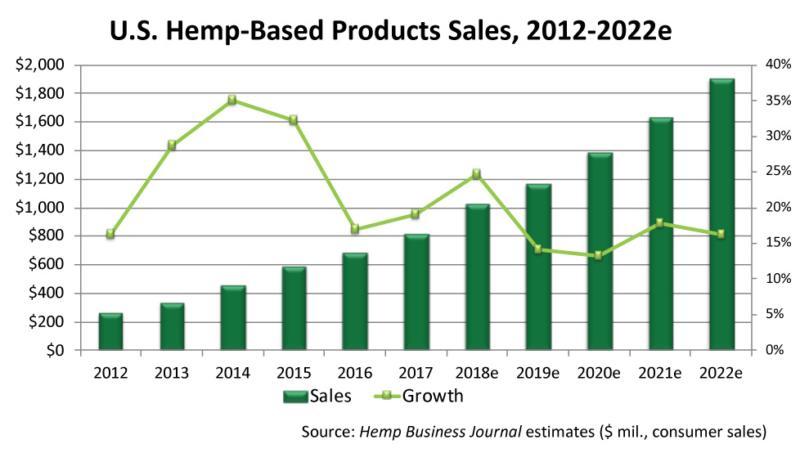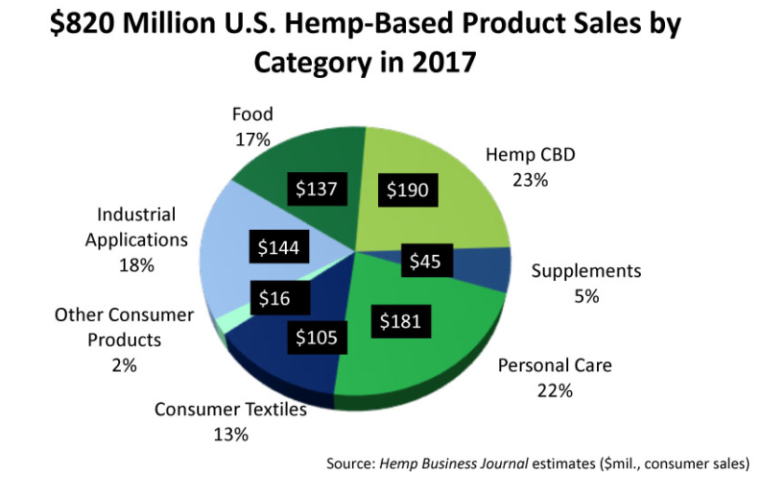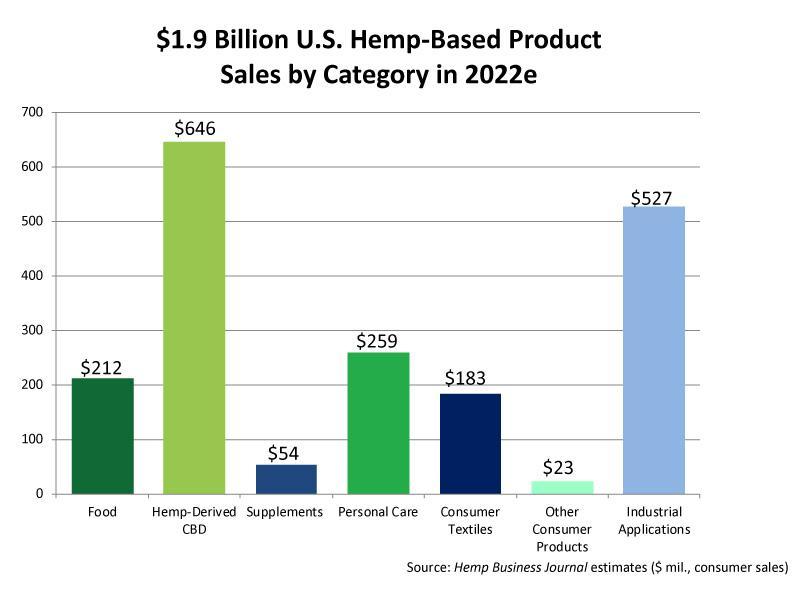Trump’s Farm Bill Opens the Door for Hemp Cultivation Stocks
Last December, Congress voted to legalize hemp cultivation and the production of cannabidiol (CBD) oil in the United States. The bill displayed strong bipartisan support amongst lawmakers and effectively ended an 80-year ban on an overlooked miracle plant that has more than 25,000 recorded uses. Industrial hemp is a commodity that can be used to produce paper, cotton, biofuels, plastics, and many other sustainable consumer items. As a result, these efforts toward re-legalization have ignited massive potential for sales growth in a wide range of industries.
Despite the challenging legal and regulatory environments which were previously in place, the U.S. hemp industry grew by 16% in 2017 (hitting annual sales records of $820 million). Large portions of this growth were driven by demand for hemp-derived CBD products, which is a sales category that didn’t exist just half a decade ago.
These rising trends suggest that initial sales expectations of $1 billion in sales for 2018 should be attainable. But these estimates pale in comparison to the sales figure of $1.9 billion which is projected by industry analysts for 2022. As consumer education spreads and regulatory hurdles are removed, it may be more likely that these estimates err to the downside as they suggest a 5-year (2018-2022) CAGR of only 14.4%. Ultimately, investors with exposure to the sector could be positioned for greater market outperformance in the event U.S. hemp sales are able to match prior annual growth rates from 2017.

Individual segment sales will eventually determine the accuracy of the market’s growth projections, and most of the focus will likely be centered on hemp-derived CBD products. This segment accounted for roughly $190 million in sales in 2017, while personal care products accounted for $181 million and food products accounted for $137 million. Automotive sales led the totals in the industrial products category while sales of snack foods led sales results in the food products category.
These segment trends are expected to expand by 2022, with hemp-derived CBD products expected to generate 34% of all hemp-based product sales in the U.S. Current projections suggest that this segment will be followed by products with industrial applications (28%), personal care products (14%), food products (11%) and consumer textiles (10%).

This type of growth from an emerging industry is exciting for many investors and last year’s Farm Bill legislation has generated plenty of new interest for those looking to capitalize on the market’s long-term projections. But which stocks are most likely to be winners? Until now, mid-cap and large-cap cannabis stocks have dominated the discussion with names like Cronos Group CRON, Canopy Growth, Aurora Cannabis and Tilray rising in popularity. But there are several reasons why investors might consider small-cap alternatives, given their preferred valuations, a broader track record of attaining profitability and a better likelihood that investors may benefit from a buyout in the future.

As a comparative example, consider the story of Canopy Growth. The stock currently trades at a market cap north of $15 billion despite the fact that the company lost over $300 million during the first nine months of fiscal 2019. Toward the end of last year, share price declines of 53.9% in CGC exposed vulnerabilities in the stock, and those downside moves were exacerbated by acknowledgments of error in its most recent quarterly earnings report.


